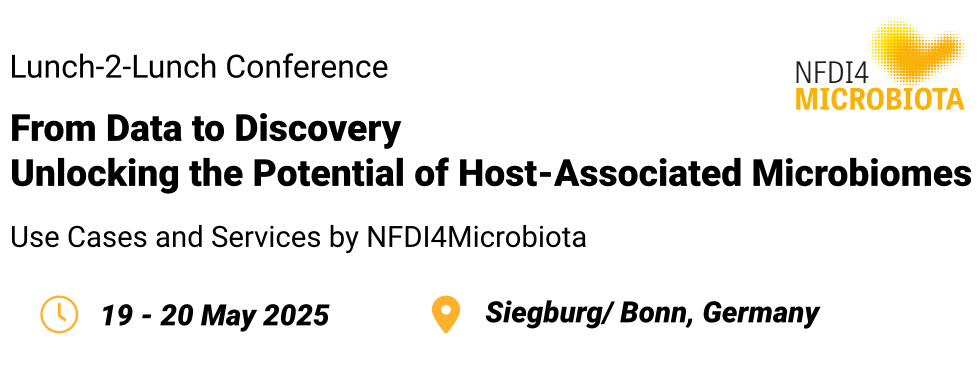|
|
|
Speaker AbstractsHands-on: Exploring Bioimage Data Management with OMEROEffectively managing multi-dimensional bioimage data extends beyond the capabilities of conventional file systems. Given the complexity and sheer volume of such datasets, a more advanced and structured approach is essential. OMERO (OME Remote Objects), a powerful bioimage data management platform developed by the Open Microscopy Environment (OME, openmicroscopy.org), offers a comprehensive solution for organizing, visualizing, and interacting with large-scale bioimage data. With OMERO, users can systematically structure their data, view image files, access and annotate metadata, generate high-quality figures, and integrate analysis workflows. This workshop will introduce participants to the challenges inherent in bioimage data management and demonstrate how OMERO facilitates efficient data handling. A combination of theoretical sessions will provide insight into bioimage data management principles, while hands-on exercises will offer practical experience in navigating and utilizing OMERO’s functionalities. SpeakerKsenia Krooß Tool demo: Enhancing Research Data Management with ARCitect and the DataPLANT ToolchainIn this demonstration, you will gain insights into the DataPLANT toolchain, which is designed in accordance with the FAIR principles—Findability, Accessibility, Interoperability, and Reusability. A central component is the Annotated Research Context (ARC) [1], a structure that enables researchers to efficiently manage, annotate, and share their data while ensuring it remains well-organized, curated, and accessible for future research and collaboration. You will learn how to use the cross-platform application ARCitect [3] to create ARCs for datasets, annotate them with ontology-based metadata, and synchronize them with the DataHUB. The DataHUB facilitates seamless data sharing with colleagues or project partners, improving interoperability and collaboration. Furthermore, the ARC submission service allows complete ARCs to be published and assigned a Digital Object Identifier (DOI) via DataCite [4]. While ARCs can be used for any type of data, this demonstration will showcase the workflow using data from the LichenMetaImage use case [5]. This use case focuses on developing standardized workflows and metadata annotation for bioimage data related to lichens and their associated microbiome. Join this session to explore how ARCs can streamline your data management workflow and enhance research reproducibility. [1] https://arc-rdm.org SpeakerSabrina Zander, Vivien Joisten-Rosenthal
Applied: From microbiological data to knowledge graph representationsFrom CoxBase to QFeverBase - a MicrobioKG usecase storyCoxBase is a specialized relational database dedicated to aggregating and organizing comprehensive pheno- and genotypic data on Coxiella burnetii, the bacterium responsible for Q fever. Serving as a central resource for researchers studying Coxiella burnetii, CoxBase compiles genomic, proteomic, and transcriptomic information, along with data on virulence factors, host interactions, and antibiotic resistance. By integrating this information in a single, searchable platform, CoxBase streamlines access to valuable data, enabling researchers to explore the bacterium’s molecular mechanisms, pathogenesis, and potential treatment targets more efficiently. Designed to support and accelerate Coxiella burnetii research, CoxBase fosters collaboration and knowledge sharing, promoting deeper understanding and Why using QFeverBase for CoxBase data?Data from scientific research projects and publications often suffer from the fact that they are not easily accessible for further scientific research and applications at the end of the projects. Due to the enormous increase in scientific data worldwide, sustainable and barrier-free access to scientific data and information is one of the current and future key challenges for the scientific community. Using Wikibase as the backend for CoxBase offers significant advantages by transforming it into a collaborative, extendable, and interconnected platform. With Wikibase, researchers across institutions can collaboratively contribute, edit, and validate the Coxiella burnetii data, ensuring it stays comprehensive and up-to-date with the latest findings. Additionally, Wikibase’s RDF (Resource Description Framework) support allows CoxBase to be seamlessly connected with other RDF-based resources, such as public health databases, genomic repositories, and biological ontologies. This connectivity enables broader data integration and comparison, enhancing the context and relevance of CoxBase data. Unlike traditional relational databases, which rely on predefined schema and rigid table structures, graph databases excel at capturing complex, multidimensional relationships between entities, such as pathogen strains, host interactions, epidemiological data, and antimicrobial resistance profiles. Furthermore, with SPARQL query support, users can execute complex, flexible searches across interconnected datasets, making it easier to identify patterns, relationships, and insights across various data dimensions — streamlining research into Coxiella burnetii and advancing Q fever understanding. Data from QFeverBase has been integrated into the NFDI4Microbiota Knowledge Graph Query Service. The integration further strengthens this knowledge network, ensuring that CoxBase contributes to a broader ecosystem of microbiological research. SpeakerVanessa Scharf and Konrad U. Förstner
Discover: StrainInfo and beyond: the future of microbial strain identity informationIn scientific literature and databases, different strain identifiers can be used to describe the same microbial strain, which significantly impedes the findability, reusability and integration of published information, and also affects the reproducibility of results. In order to ensure the traceability of microbial strains, the StrainInfo database collects and matches of all existing identifiers of microbial strains. To additionally improve and encourage the referencing and linking of microbial strain data, StrainInfo has introduced the DOI as a persistent identifier for strains. When researchers isolate and describe large sets of strains from microbiome studies they need persistent identifiers early on to keep track of them throughout the deposition process in culture collections as well as in publications and sequence submissions. The DSMZ has developed a bulk submission for strain collections that greatly simplifies the deposition of large sets of strains and provides StrainInfo DOIs at the beginning of the process. This process allows the tracking of the deposition statuses of strains and improves the traceability by their DOI throughout literature and databases. A new user interface, called StrainRegistry, will allow microbiologists to register strains that they wish to deposit, along with their metadata, and to submit strains directly to participating culture collections. This will assist researchers in organising the deposition of strains and ensure that FAIR strain data is available from the outset. SpeakerLorenz Reimer
|


